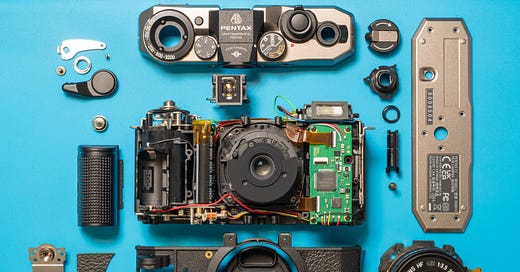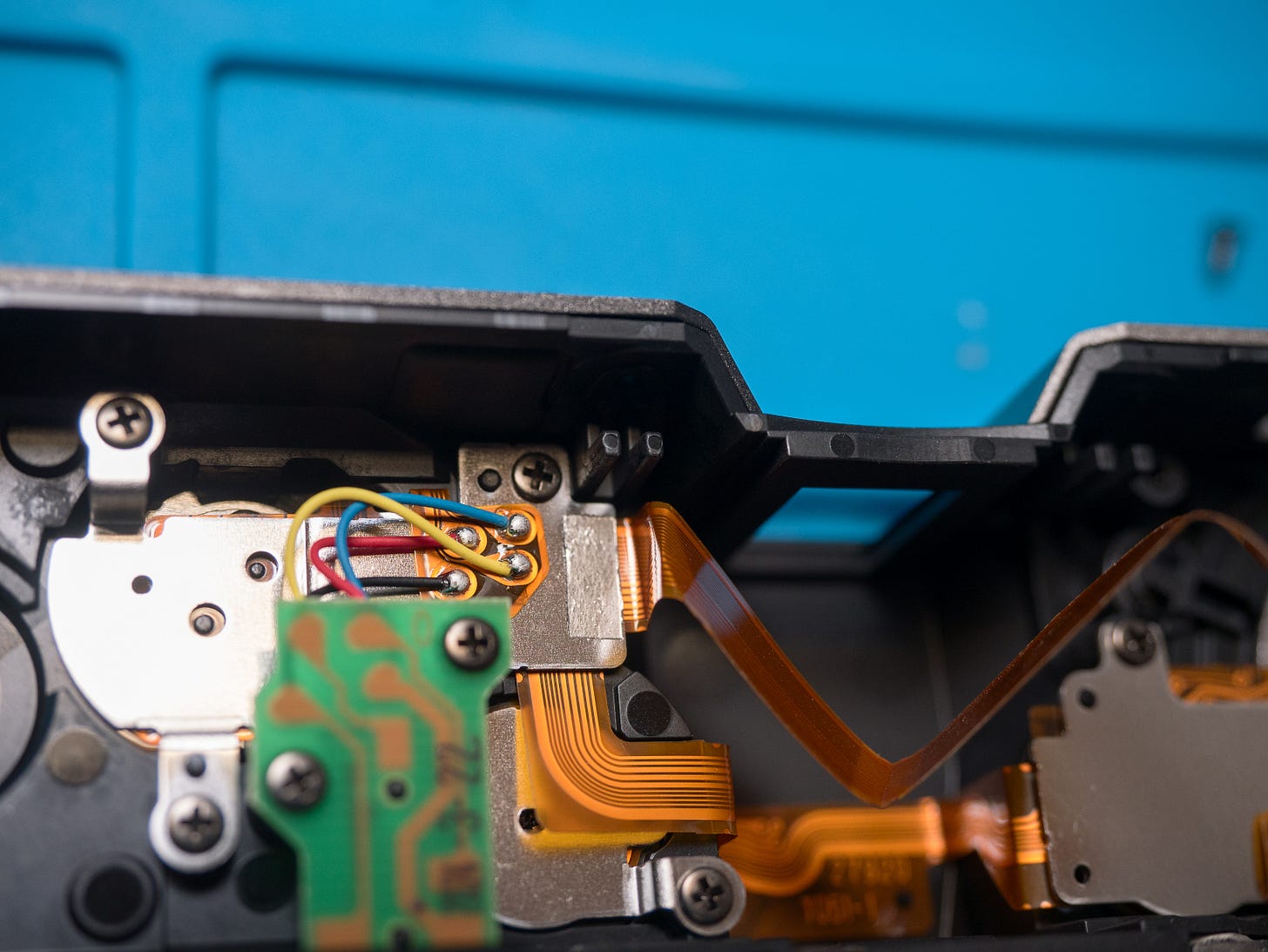Looking inside the new Pentax 17
A brand new film camera: first impressions, repairability, and the future
It’s 2024, and Ricoh Pentax just released a new film camera, their first in decades.
I’ve been shooting with Pentax film cameras since I got into film, starting with my aunt’s Asahi Pentax Spotmatic from her photojournalist days. I shot nearly exclusively on a Pentax MX for three years. And Pentax cameras were the first cameras I took apart, as I taught myself to complete progressively more involved repairs.
So I preordered the Pentax 17 as soon as I could, and shot a roll with it as soon as it arrived, but I was most interested in what was going on inside. Would the Pentax 17 resemble a modern consumer electronics device, or the manual mechanical cameras from the ‘80s that inspired it?
I also felt, given the care and attention Pentax put into the project, that the Pentax 17 deserved a treatment celebrating the design of its internals – much like the highly produced teardown videos that accompany new Apple product releases.
So I made a YouTube video:
And took a picture:
And I’m working on a repair reference document.
Takeaways
Taking apart the Pentax 17 was like an ‘80s era mechanical camera, only easier
All the screws in the Pentax 17 were standard cross drive (I cannot say whether they were JIS or Phillips or any of the surprisingly numerous cross drive screw standards), and only one was reverse threaded. The only specialized tool I needed was a lens opener to remove one retaining ring on the top plate. And getting to the state pictured above required no soldering, thanks to the presence of ZIF connectors throughout.
The Pentax 17 inside is a hybrid of old and new, in a good way
New:
ZIF connectors for FPCs
32-bit MCU (RX130 series)
Motorized lens movement for focusing
Old:
Manual film advance with metal gears
Potentiometers for dials
Free soldered wires connecting circuit boards to distant components
As I see it, Pentax managed to incorporate the benefits of modernized electronics technology (ZIF connectors for repairability, digital electronics for a simpler design and lower BOM cost) while avoiding the pitfalls (excessive miniaturization at the expense of repairability, proprietary screws, cheap plastic parts).
Meanwhile, they kept the best of the ‘80s era designs (metal gears, nonproprietary screws) without carrying forward less desirable legacies (springs that pop out as soon as you remove retaining plates, soldering required for disassembly).
Basically, when it comes to old and new, the Pentax 17 is the best of both worlds!
The Pentax 17 is built to last, and to be repaired
Metal gears, ZIF connectors, and a generally well-thought-out and clean interior all point to a camera, that should last for years, and one designed to be repaired. Quite refreshing to see in what is essentially a brand new consumer electronics product.
The Pentax 17 tells us about future Pentax film cameras
I made a few observations during the teardown that I think help tell a story about the design process of the Pentax 17, and of the other film cameras that Pentax is working on:
The lens movement is motorized, despite the zone focus interface
There is quite a bit of empty space inside the Pentax 17
The pressure plate is full frame sized
Observation #1 leads me to believe that Pentax is definitely working on an autofocus film camera (as the motorized lens assembly could easily be adapted for autofocus). Pentax has already basically said as much, but seeing this assembly in a shipping camera indicates (to me) that they’re quite far along in developing the autofocus system.
Observation #2, along with #1, suggests to me that the Pentax 17 may have even been an autofocus camera early in the design process.
And #2 along with #3 suggests that Pentax may have even been considering a full frame camera when they started designing the Pentax 17. Though I am especially cautious about suggesting this, the length of the pressure plate could just be driven by the size of the top plate (which is as small as it could be while accommodating all the controls).
Conclusion
It’s an exciting time to be a film photographer! There’s another brand new film camera on the way from MiNT Camera, plus more film cameras likely coming from Pentax soon.
I’m impressed that the current analog revival is large and sustained enough to convince an established camera manufacturer like Pentax (Ricoh) to invest so heavily in film. In an age of AI-generated imagery and computational photography, maybe it’s no surprise that more and more people want to record their memories without digital intermediation. Just keep your negatives!






